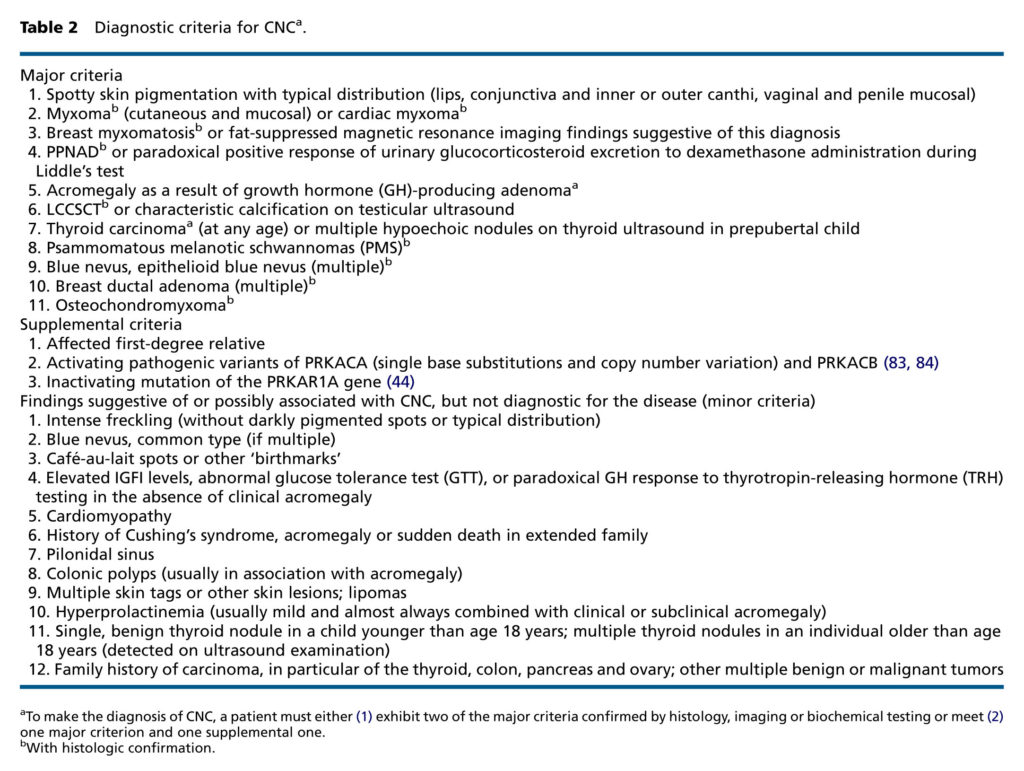How is a diagnosis made?
A diagnosis of Carney Complex (CNC) is made based upon1:
- identification of characteristic symptoms
- a detailed patient history, including the family medical history
- a thorough clinical evaluation/ physical exam
- a variety of specialized tests
What are characteristic symptoms for Carney Complex?
Below is a list of major and supplemental (or minor) criteria2 clinicians use to make a diagnosis of CNC. You can use this list as a screening tool, based on the symptoms you have experienced.
Please carefully read the image’s footnotes a and b and take them into consideration, as they discribe the required methods needed to confirm it‘s CNC. It‘s important to note that affected individuals may not have all the symptoms.

Think you might have Carney Complex?
If you think you have symptoms that meet two of the major criteria or one major criterion and one supplemental, your first steps would be to contact your primary physician or general practitioner (GP). I would also encourage you to bring along information on Carney Complex (which can be found here), as your doctor may be unfamiliar with it.
Several different tests and clinical examinations should be done to see if your and/ or your doctor’s suspicion is correct. Your GP will want to refer you to a specialist (or specialists) for further testing. While your symptoms may suggest Carney Complex, the diagnosis must be confirmed by histology, imaging or biochemical testing.
‘Tests that may be performed to help obtain a diagnosis of Carney Complex include surgical removal and microscopic study of affected skin (skin biopsy), urine analysis to detect elevated levels of cortisol (indicative of Cushing’s disease), an echocardiogram to detect the presence of cardiac myxomas, and blood tests to detect abnormal high levels of certain hormones such as insulin-like growth factor, cortisol and prolactin due to the presence of endocrine tumors.’1
Is genetic testing available for Carney Complex?
- J. Aidan Carney MD, PhD, FRCP, Emeritus Professor of Pathology, Mayo Clinic; https://rarediseases.org/rare-diseases/carney-complex/ [↩] [↩]
- Carney Complex: an update, page 6, R. Correa, P. Salpea and C. A. Stratakis [↩] [↩]
